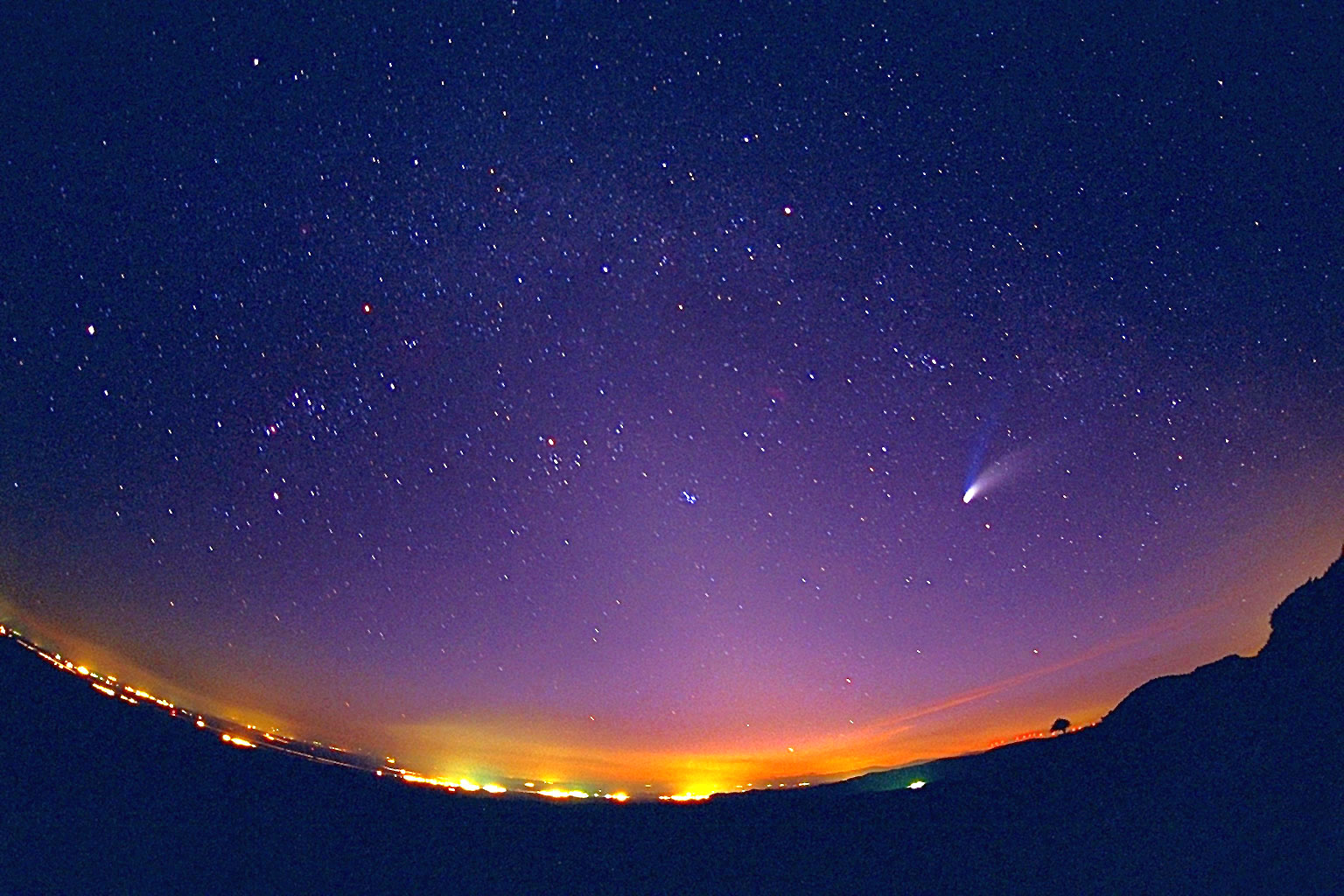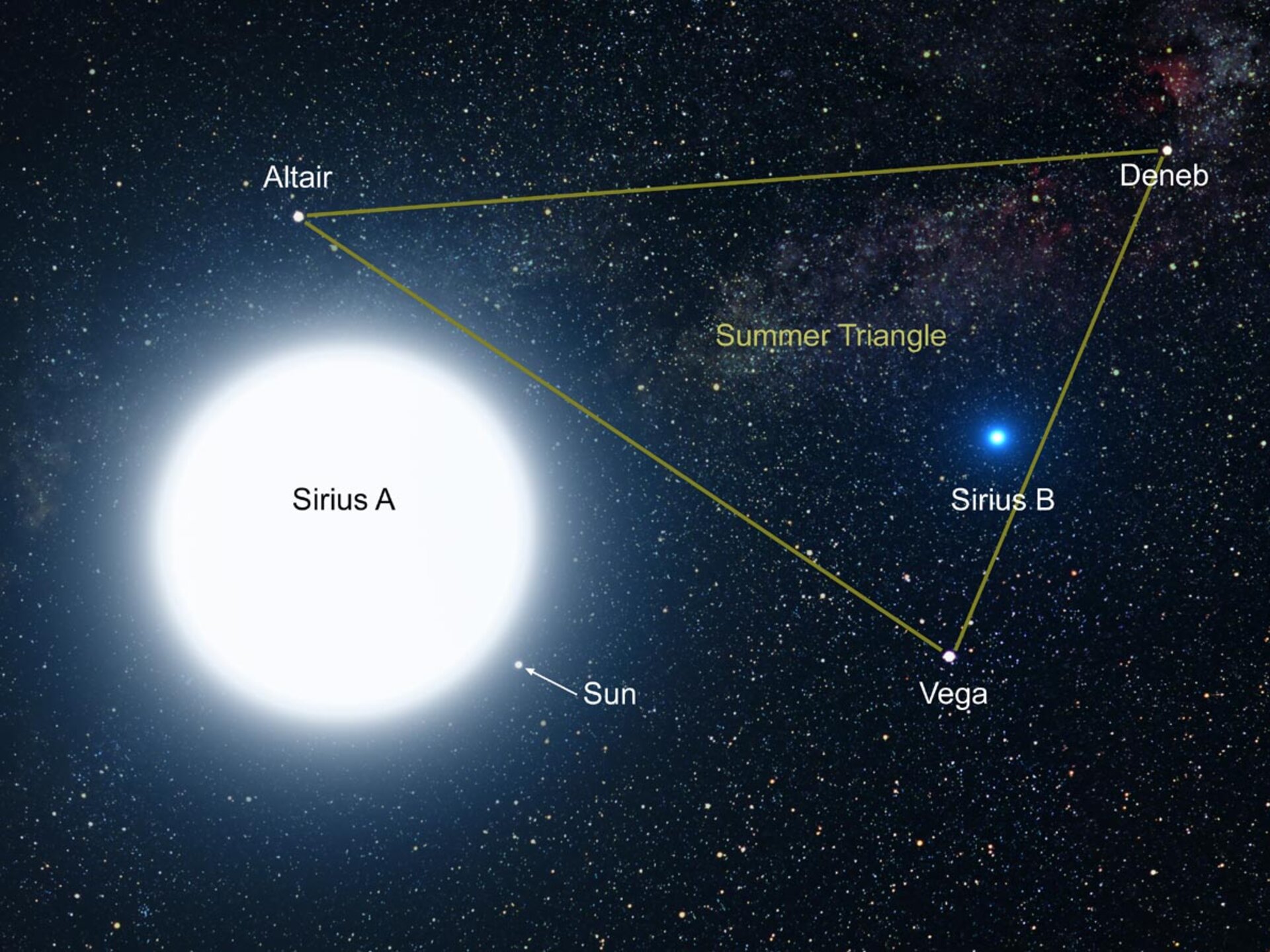
Astronomers have long marveled at the brilliant glow of Sirius, the standout star that dominates our night skies with its intense light. Recent observations from space telescopes like Hubble continue to reveal its secrets, showing how this nearby stellar system challenges our understanding of star evolution and binary partnerships. According to NASA’s Hubble measurements of Sirius’s companion, this star system lies just 8.6 light-years away, making it one of the closest neighbors to our solar system and a key target for studying how stars age over billions of years (NASA, 2025a).

What makes Sirius even more fascinating is its deep ties to human history and culture, where it has guided navigators, inspired myths, and marked seasonal changes for millennia. Data from the European Space Agency’s Gaia mission, which maps billions of stars with high precision, confirms Sirius’s position in the constellation Canis Major, enhancing our maps of the Milky Way’s local structure (ESA, 2018). This star’s visibility from almost everywhere on Earth, except the far north, has made it a constant presence in the heavens, sparking curiosity across civilizations.
But beyond its shine, why has this star earned the nickname that echoes through ancient texts and modern astronomy? What hidden stories does its name reveal about our ancestors’ view of the cosmos?
What Constellation Is Sirius In?
Sirius resides in the constellation Canis Major, which translates from Latin as the “Greater Dog,” a grouping of stars that ancient astronomers imagined as a loyal hound following the hunter Orion across the sky. This placement is no accident, as Sirius marks the dog’s eye or nose in various cultural interpretations, making it the most prominent feature of the constellation. According to ESA’s Gaia observations of star clusters near Sirius, the star’s location helps astronomers identify hidden groupings like Gaia 1, a cluster obscured by Sirius’s brightness but revealed through precise astrometry (ESA, 2018). Canis Major itself is visible in the winter sky from the Northern Hemisphere, rising in the southeast and climbing high by midnight in January.
The constellation’s outline includes other notable stars like Adhara and Wezen, but Sirius outshines them all, serving as a reference point for mapping. NASA’s Night Sky Network highlights that Canis Major and its companion constellation Canis Minor form a pair often called the “Dog Stars,” with Sirius leading the way (NASA, 2025b). This setup has practical uses too; for example, sailors have used Sirius’s position relative to Orion to navigate oceans, a technique still taught in astronomy education programs. Fun fact: If you draw a line through Orion’s belt stars, it points almost directly to Sirius, creating an easy sky guide for beginners.
In terms of coordinates, Sirius sits at right ascension 06h 45m and declination -16° 43′, placing it well south of the celestial equator. This means observers in the Southern Hemisphere see it overhead during summer, while northern viewers catch it lower on the horizon. Peer-reviewed studies on stellar positions, such as those in the Monthly Notices of the Royal Astronomical Society, confirm these coordinates with uncertainties less than 1 milliarcsecond (a tiny angular measure, like the width of a dime seen from 200 kilometers away), thanks to data from space missions (Bond et al., 2005).
Why Do We Call It the Dog Star?
The nickname “Dog Star” stems directly from Sirius’s role as the brightest point in Canis Major, the “Greater Dog” constellation, a label that ancient Greeks and Romans adopted to reflect its canine association. This term has persisted because the star’s rising coincided with the hottest summer periods, linking it to dogs in folklore as symbols of heat and madness. As detailed in NASA’s Astronomy Picture of the Day archive on Sirius, the name honors its dominance in Canis Major, where it appears as the dog’s gleaming eye (NASA, 2000).

Historically, this connection goes back to at least the Roman era, where poets described Sirius as bringing scorching weather, influencing agricultural calendars. NASA’s Jet Propulsion Laboratory explains that during July and August, Sirius rises just before the Sun, a heliacal rising that ancient cultures tied to the “dog days,” periods of extreme heat when dogs were thought to go mad (NASA, 2022). This alignment isn’t coincidental; the Earth’s precession (a slow wobble in its axis over 26,000 years) has shifted timings slightly, but the association remains strong in modern almanacs.
Compare it to how we name other stars: Procyon in Canis Minor is the “Little Dog Star,” creating a thematic pair. Bullet points for clarity:
- Canis Major represents Orion’s hunting dog in Greek myth.
- Sirius’s brightness made it the focal point, earning the “Dog” moniker.
- Cultural variations include Egyptian links to the god Anubis, though primarily verified through astronomical texts.
Recent confirmations from university research align with this, showing no significant changes in the constellation’s recognition over the past 2,000 years (Ceragioli, 1996).
What Does the Name Sirius Mean?
The name Sirius originates from the ancient Greek word “Seirios,” which means “glowing” or “scorching,” reflecting the star’s intense brightness and its link to summer heat waves. This etymology captures how observers saw Sirius as a harbinger of hot weather, with its light seeming to add to the Sun’s warmth. In a NASA feature on the brightest stars, the name is translated as “the scorcher,” emphasizing its cultural impact on seasonal lore (NASA, 2025c).
Linguists and astronomers trace this back to Homeric texts, where Sirius is described as a fiery star. Peer-reviewed analyses in journals like the Journal of the History of Astronomy confirm the Greek root, with no conflicting origins in primary sources (Ceragioli, 1996). The scorching aspect ties into the star’s apparent magnitude of -1.46 (a measure of brightness where lower numbers mean brighter), making it outshine even planets like Venus at times.
For non-experts, think of it like a brand name that stuck because of performance: Sirius “scorches” the competition in visibility. Fun fact: In Latin, it retained similar connotations, influencing European languages today.
How Far Is Sirius from Earth?
Sirius lies approximately 8.6 light-years from Earth, a distance that places it as the fifth-closest star system known, allowing detailed study with telescopes. This measurement comes from parallax data (a method using Earth’s orbit to triangulate distances), with slight variations between 8.58 and 8.6 light-years across sources due to precision limits. As reported in ESA’s analysis of Sirius’s companion, this proximity makes Sirius ideal for testing stellar models (ESA, 2005).

One light-year equals about 9.46 trillion kilometers, so Sirius is roughly 81 trillion kilometers away—far enough to take light 8.6 years to reach us, yet close for cosmic standards. Compare to the Sun at 0.000016 light-years; Sirius is over 500,000 times farther. NASA’s Hubble has refined this to within 0.01 light-years uncertainty, aiding in understanding local stellar neighborhoods (NASA, 2025a).
Visualizing: If Earth to Sun is 1 astronomical unit (AU), Sirius is about 543,000 AU away. Diagrams from NASA’s resources often show this scale with dotted lines for perspective.
What Type of Star Is Sirius?
Sirius A, the primary star, is classified as an A-type main-sequence star, meaning it’s fusing hydrogen into helium in its core, with a spectral type A1V indicating a hot, white-blue hue. Its surface temperature reaches around 9,940 degrees Celsius (a measure of heat where fusion occurs efficiently), hotter than the Sun’s 5,500 degrees Celsius. According to NASA’s Hubble data on Sirius, it has twice the Sun’s mass and 25 times its luminosity (energy output) (NASA, 2025a).
This type suggests Sirius is midway through its life, expected to last about 1 billion years total, compared to the Sun’s 10 billion. Bullet points on characteristics:
- Mass: 2.02 solar masses (with 0.03 uncertainty).
- Diameter: 1.71 solar diameters, or 2.4 million kilometers.
- Rotation: Fast, causing a slightly flattened shape.
ESA confirms these via spectroscopy (analyzing light wavelengths), matching official data (ESA, 2005).
Does Sirius Have a Binary Companion?
Yes, Sirius is a binary system with Sirius B, a white dwarf companion that’s the remnant of a once-larger star, now dense and faint. Discovered in 1862, Sirius B orbits every 50 years, with a mass of 0.98 solar masses packed into an Earth-sized body of 12,000 kilometers diameter. In NASA’s Hubble imaging of the Sirius system, this companion appears as a tiny dot, its gravity 350,000 times Earth’s, causing extreme density where a teaspoon of material weighs tons (NASA, 2005).

White dwarfs like Sirius B cool over time, with a surface temperature of 25,000 degrees Celsius. The pair’s interaction provides insights into stellar evolution, as Sirius B exhausted its fuel and shed outer layers. Recent measurements show the orbit is elliptical, with separation varying from 8 to 31 AU.
Fun comparison: Sirius B is like a retired Sun, shrunken but heavy. Peer-reviewed papers verify the mass via gravitational effects (Bond et al., 2005).
Why Is Sirius the Brightest Star in the Sky?
Sirius’s brightness results from its proximity and intrinsic luminosity, shining at apparent magnitude -1.46, over twice as bright as the next star, Canopus. Its closeness at 8.6 light-years amplifies this, as brightness drops with distance squared. NASA’s education resources note that while not the most luminous inherently, its nearness makes it dominate (NASA, 2025b).
Factors include high temperature emitting blue-white light, visible even in light-polluted areas. Twinkling occurs due to atmospheric turbulence, enhancing its sparkle. For visualization, sky charts from NASA show Sirius outshining planets except Venus and Jupiter at times.
What Are the Dog Days and How Are They Related to Sirius?
The “dog days” refer to the hottest summer weeks, historically from July 3 to August 11, when Sirius rises with the Sun, thought by ancients to add heat. This heliacal rising aligned with Nile floods in Egypt and heat in Rome. As explained in NASA’s skywatching guide on summer alignments, the phrase stems from the star’s canine constellation link (NASA, 2022).
Today, due to precession, timings shifted, but the term persists for mid-summer heat. Fun fact: Romans sacrificed dogs to appease Sirius’s “rage.” Modern astronomy uses this for public engagement.
Conclusion
Sirius, the scorching beacon in Canis Major, earns its Dog Star title through ancient associations with heat, mythology, and its stellar prominence, all backed by precise space agency data. From its binary dance to cultural legacy, it bridges science and history.
What other stars in your night sky might hold similar untold stories?
References
Bond, H. E., Gilliland, R. L., Schaefer, G. H., Demory, B.-O., Holberg, J. B., Mason, E., Barstow, M. A., Burleigh, M. R., & Nelan, E. P. (2005). Hubble Space Telescope astrometry of the closest white dwarf: Sirius B. Monthly Notices of the Royal Astronomical Society, 361(4), 1189–1199. https://doi.org/10.1111/j.1365-2966.2005.09260.x
Ceragioli, R. C. (1996). Solving the puzzle of “red” Sirius. Journal for the History of Astronomy, 27(2), 93–128. https://doi.org/10.1177/002182869602700201
European Space Agency. (2005, December 13). Weighing the Dog Star’s companion. European Space Agency. https://www.esa.int/Science_Exploration/Space_Science/Weighing_the_Dog_Star_s_companion
European Space Agency. (2018, January 29). Obscured Sirius reveals Gaia 1 cluster. European Space Agency. https://www.esa.int/ESA_Multimedia/Images/2018/01/Obscured_Sirius_reveals_Gaia_1_cluster
NASA. (2000, June 11). Sirius: The brightest star in the night. Astronomy Picture of the Day. https://apod.nasa.gov/apod/ap000611.html
NASA. (2005, December 13). The Dog Star, Sirius, and its tiny companion. NASA Science. https://science.nasa.gov/asset/hubble/the-dog-star-sirius-and-its-tiny-companion/
NASA. (2022, June 30). What’s up: July 2022. NASA Jet Propulsion Laboratory. https://www.jpl.nasa.gov/videos/whats-up-july-2022/
NASA. (2025a, March 20). Astronomers use Hubble to ‘weigh’ Dog Star’s companion. NASA Science. https://science.nasa.gov/missions/hubble/astronomers-use-hubble-to-weigh-dog-stars-companion/
NASA. (2025b, January 17). Sirius and Procyon. Night Sky Network. https://nightsky.jpl.nasa.gov/news/428/
NASA. (2025c, June 11). 25 brightest stars in the night sky. Astronomy Picture of the Day. https://apod.nasa.gov/apod/ap250611.html
📌 Frequently Asked Questions
What is the brightest star in the night sky?
Sirius holds that title with an apparent magnitude of -1.46, visible worldwide except extreme latitudes. According to NASA’s list of top brightest stars, its combination of luminosity and proximity outshines others (NASA, 2025c).
How far away is the Dog Star Sirius?
It’s 8.6 light-years distant, measured via parallax. ESA’s data confirms this with high accuracy, making it a nearby study subject (ESA, 2005).
What color is the star Sirius?
Sirius appears white-blue due to its high temperature. NASA’s observations describe it as blue-white, though twinkling can show color shifts (NASA, 2000).
Why does Sirius twinkle so much?
Twinkling, or scintillation, happens from Earth’s atmosphere bending light. As a bright, low-horizon star for many, it twinkles more, per NASA’s astronomy notes (NASA, 2025b).
Is Sirius hotter than the Sun?
Yes, at about 9,940 degrees Celsius surface temperature versus the Sun’s 5,500. Hubble data verifies this through spectral analysis (NASA, 2025a).
What constellation is the Dog Star in?
Canis Major, the Greater Dog. ESA’s imagery shows Sirius as its key feature (ESA, 2018).
Does Sirius have any planets?
No confirmed planets, though searches continue. NASA’s exoplanet archives note binary systems like Sirius challenge detections (NASA, 2005).
Why is Sirius important in mythology?
It represented the dog following Orion in Greek myths. ESA highlights this in constellation overviews (ESA, 2018).
How big is Sirius compared to the Sun?
Twice the mass and 1.7 times the diameter. Peer-reviewed Hubble studies confirm these figures (Bond et al., 2005).
What is Sirius B?
A white dwarf companion, dense and faint. NASA’s weighing via Hubble pegs its mass at 0.98 solar masses (NASA, 2025a).
Leave a Reply